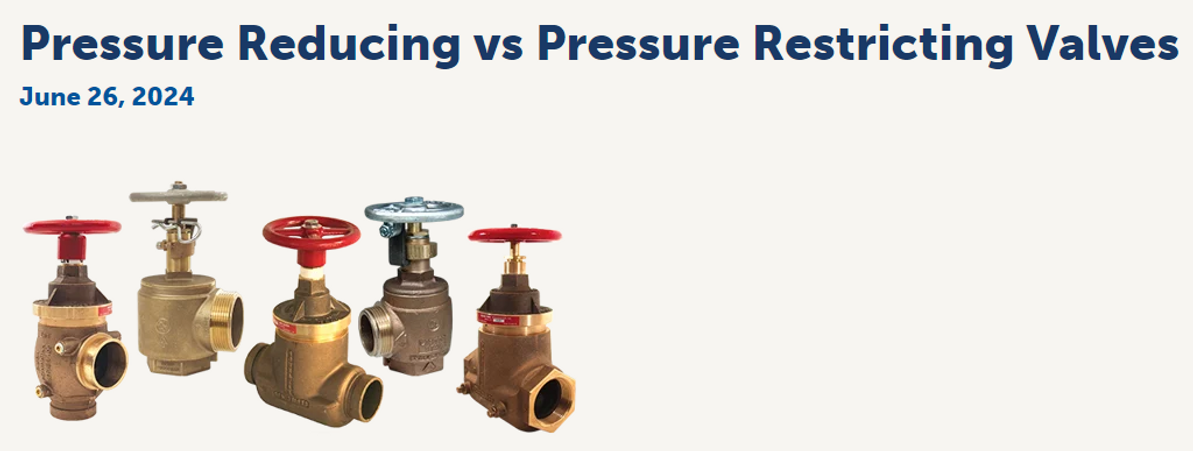Pressure Reducing vs Pressure Restricting Valves
In the vast network of pipelines in industrial complexes, residential buildings, and municipal water systems, maintaining optimal pressure is crucial. Pressure control valves play a pivotal role in this process. Two common types of pressure control valves are pressure-reducing valves and pressure-restricting valves.
Pressure-Regulating Devices
The National Fire Protection Association (NFPA) defines pressure-regulating devices as something designed to reduce, regulate, control, or restrict water pressure. When installed as part of a hose valve the device is either a pressure-reducing valve or a pressure-restricting valve.
Pressure Reducing and Pressure Restricting
There are two terms to understand when discussing reducing and restricting devices: static and residual pressure. Static describes the pressure of water that is not flowing, meaning it is motionless. Residual pressure, however, describes the pressure of water when flowing or under working pressure.
Pressure-reducing valves are designed to reduce the downstream water pressure under both static and residual conditions. They are used in most fire suppression applications where the inlet pressure is greater than 175 PSI. These valves use a counteracting internal piston to use inlet pressure to reduce the outlet pressure. The larger the internal piston the greater the pressure-reducing capability.
Pressure-restricting valves are commonly found in the form of angle valves with preset orifices which restrict the volume of water, thereby lowering the pressure of the flowing water. They are designed to reduce the downstream water pressure under residual conditions only. Pressure-restricting valves are used when flowing water pressure needs to be controlled. NFPA requires restricting valves where the inlet pressure exceeds 100 PSI. Unlike pressure-reducing valves, restricting valves have no effect on the static pressure of a system.
Summary
Both pressure-reducing and pressure-restricting valves play vital roles in regulating fluid pressure within a system. While pressure-reducing valves ensure a consistent downstream pressure by reducing the incoming pressure, restricting valves focus on limiting maximum pressure to prevent over-pressurization. Understanding the distinct functions and applications of these valves is essential for designing and using efficient and safe fluid control systems.
Recent Posts
-
What to Expect When Partnering with a Master Distributor Like GETPIPE
Are you considering teaming up with a master distributor for your industrial products needs? Partn …October 27, 2025, 9:21 pm -
Expert Tips for Streamlining Your Industrial Purchasing Process
In the fast-paced world of industrial purchasing, efficiency isn't …October 20, 2025, 7:05 am -
Navigating Product Specifications: Terms You Should Know
Understanding product specifications can often feel like trying to …October 13, 2025, 7:05 am


